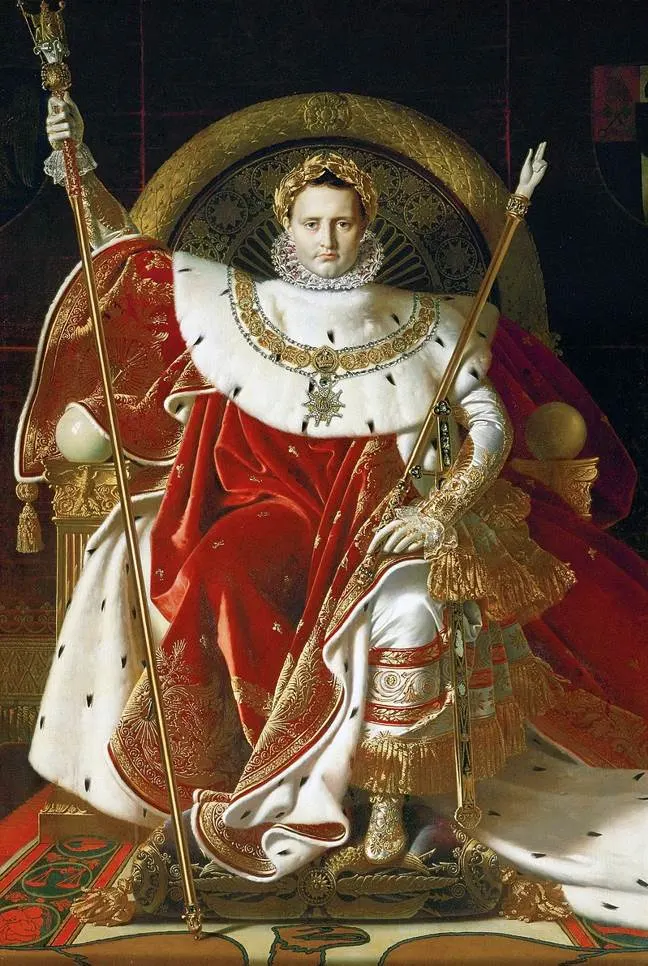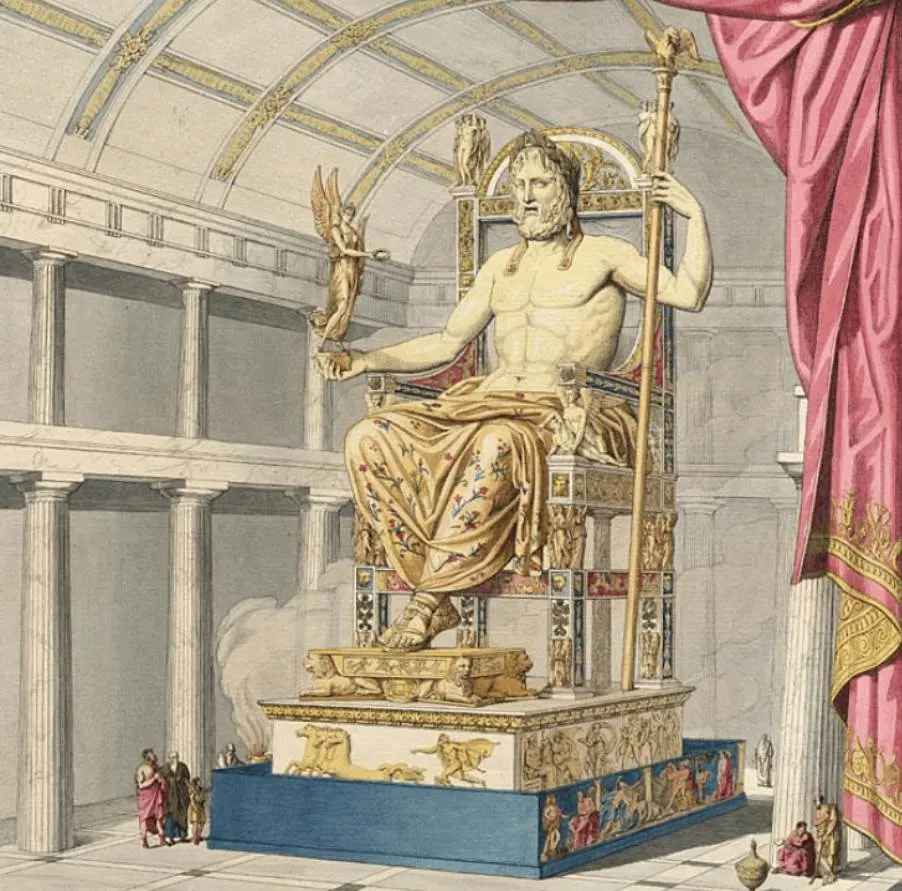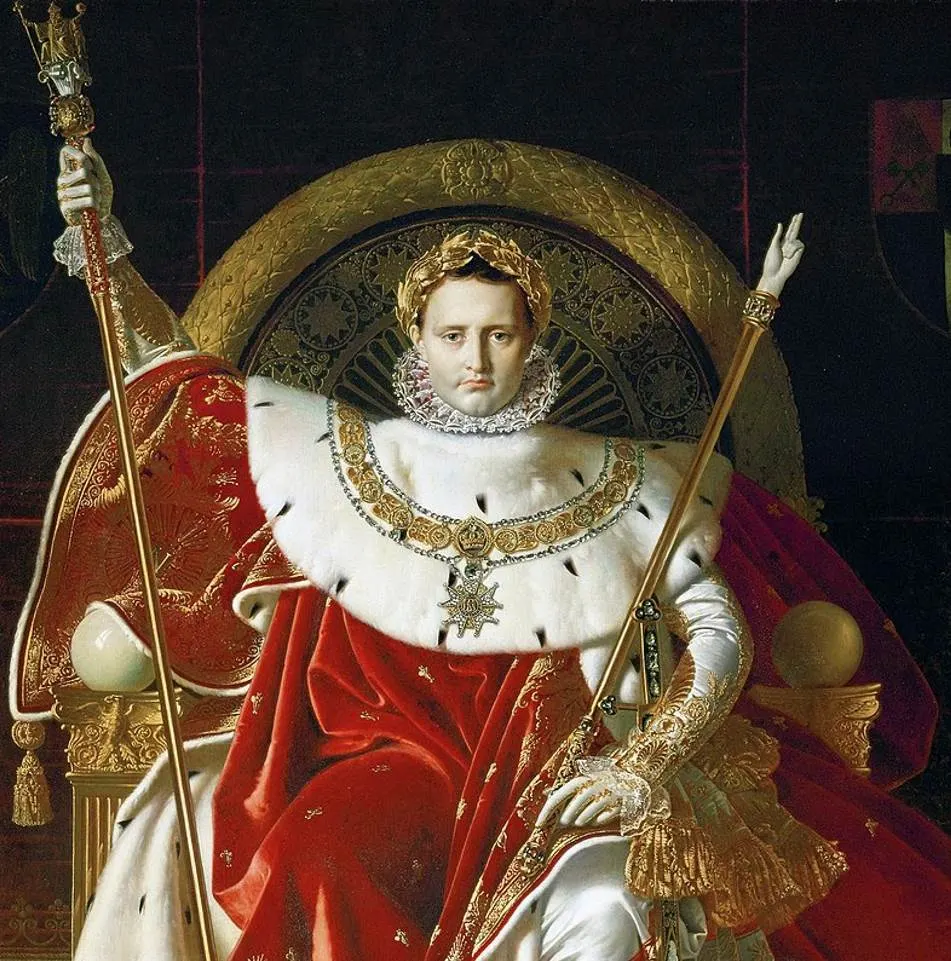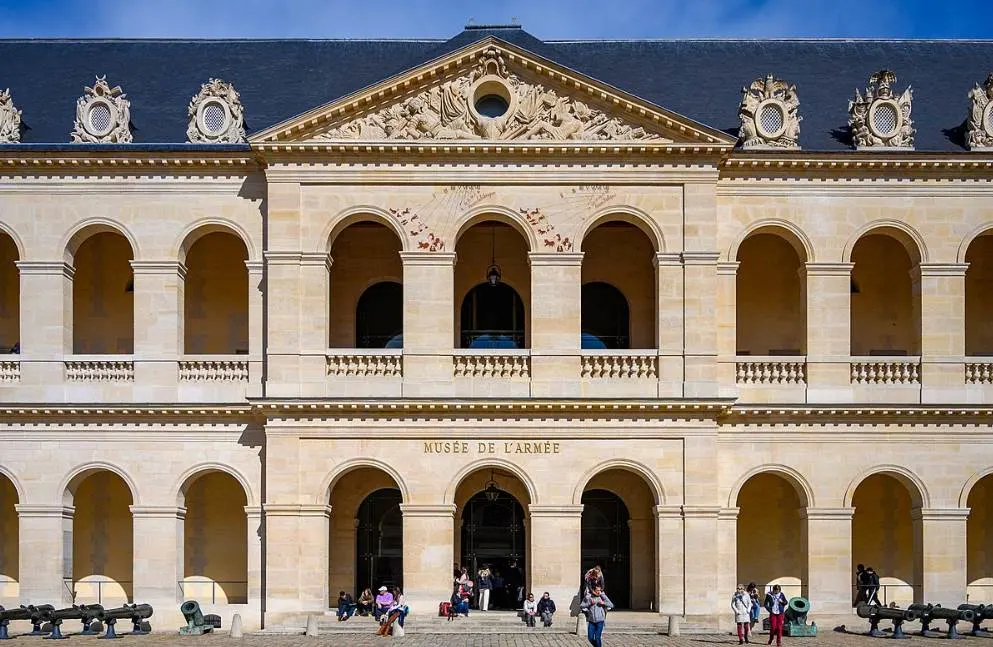One of Europe’s most contentious figures of the late 18th and early 19th centuries was a popular subject among the most renowned French artists at the time.
This is remarkable because Napoleon Bonaparte (1769-1821) didn’t have a lot of time to sit for them considering he was too busy raging war all across the continent.
Let’s take a closer look at Napoleon I on His Imperial Throne by Jean-Auguste-Dominique Ingres, one of the most controversial Napoleon paintings for several reasons.
1. It was completed less than 2 years after Napoleon’s coronation
The title of the painting, Napoleon I on His Imperial Throne, is rather self-explanatory. It depicts Napoleon I of France shortly after he was coronated as Emperor of France.
This event took place on December 2, 1804, at the Notre Dame Cathedral in Paris and was deemed to be a propaganda event initiated by the most powerful man in Europe.
It was different from the coronation ceremony of the Kings of France, an event that traditionally took place at Reims Cathedral. instead, Napoleon combined various rites and traditions from the Carolingian era and the Ancien Régime.
Most importantly, he also included new ceremonies conceived during the French Revolution in order to mark the start of the First French Empire.
The painting by Ingres was completed in 1806, less than 2 years after the Coronation of Napoleon took place. The artist already completed an earlier painting of the man titled “Bonaparte, First Consul,” in 1804.

2. It depicts Napoleon wearing his original coronation costume
The painting depicts the costume that Napoleon wore during the event at Notre Dame Cathedral. Ingres also included various elements related to the actual event:
- Napoleon sits on an Imperial throne with a circular back and armrests of ivory balls.
- He holds the Scepter of Charlemagne or Scepter of Charles V in his right hand. This is an important item as it has been used during the coronation of most Kings of France.
- He holds another scepter in his left hand known as “The Hand of Justice.”
- He wears a golden laurel wreath on his head, a reference to the item worn by Roman Emperors.
- He wears the great collar of the Légion d’honneur around his neck, the highest French order of merit.
- The coronation sword stands next to him and is held in place by a magnificently decorated silk scarf.
- The carpet below the gold embroid cushion on which his foot rests features an imperial eagle.

3. Ingres probably used a colossal ancient Greek statue as a model

Jean-Auguste-Dominique Ingres was reputed to find inspiration for his paintings in existing works. The abundance of confiscated paintings that were brought to Paris by Napoleon definitely helped Ingres artistically.
Various suggestions have been made as to where he got the inspiration for depicting Napoleon I the way he did in this painting.
One of the most notable is the Statue of Zeus at Olympia, a colossal statue of the ancient Greek God that is considered to be one of the 7 Wonder of the Ancient World.
The statue was destroyed in history but several depictions of it exist. The pose of Zeus looks strikingly similar to how Napoleon sits on his imperial throne.
He used the same pose for his painting “Jupiter and Thetis” in 1811.

4. Jan van Eyck’s painting depicting God might have been another source of inspiration
One of the world’s greatest art treasures is located in St Bavo’s Cathedral, Ghent, Belgium. This monumental polyptych painting is known as the Ghent Altarpiece.
It was painted by the brothers Hubert and Jan van Eyck in the 1420s and early 1430s and one of the panels depicting God the Father looks strikingly similar to Napoleon I on His Imperial Throne.
Despite the clear resemblance, Ingres firmly denied that he was inspired by this magnificent work of art by the famous Flemish artist. He stated:
I think much of Jean de Bruges (Jan van Eyck who worked in Bruges), I would wish to resemble him in many ways, but still, he is not my painter and I believe that the critics cited him at random.

5. The artist included a Raphael painting on the carpet in the bottom left corner
Ingres was reluctant to admit that he borrowed elements from other artists because it was the main source of criticism for his work.
He wasn’t secretive about his admiration for the paintings of Raphael, though. Raffaello Sanzio (1483-1520) was his favorite artist and he often included hints of it in his paintings.
In the bottom left corner, just above his signature “INGRES P xit” (he added ANNO 1806 in the bottom right), we can see medallions depicted on the carpet.
One of these depicts the scales of the zodiac while the other depicts a Raphael painting titled “Madonna della Seggiola” (1513-1514).
This was Ingres’ way to pay tribute to the Renaissance master who was his greatest idol.

6. The painting was heavily criticized when it was displayed at the 1806 Paris Salon
The painting was displayed at the Paris Salon of 1806 and was titled “His Majesty the Emperor on his throne” during the exhibition.
The idealized version of Napoleon, the Merovingian attributes worn by the Emperor, and the elements that Ingres borrowed from the past were all subject to heavy criticism.
Unsurprisingly, the biggest critic was Ingres’ biggest rival at the time, Jacques-Louis David (1748-1825), a man who completed his immense “The Coronation of Napoleon” the following year.
Regardless of the critics, we do have to admit that the manner in which Ingres painted the costume and regalia is of the highest level.

7. How big is Napoleon I on His Imperial Throne by Jean-Auguste-Dominique Ingres?
Ingres depicted Napoleon I life-sized as he sits on his imperial throne. This oil on canvas painting has dimensions of 259 × 162 centimeters (102 × 64 inches).
8. Where is the painting located today?
Whether or not this theory is true remains subject to debate, but some art historians have suggested that the painting was commissioned by Italians. This would mean that it was intended to depict Napoleon as the King of Italy.
Because Ingres included iconography related to the Merovingian era and the French Revolution, the Italian institution refused it and it was subsequently acquired by the French state.
The painting was transferred to the Louvre Museum in 1815 and remained in the collection of the Louvre until 1832. This was the year it was transferred to Les Invalides, the military complex where Napoleon’s remains were placed.
Today, the painting is one of the main attractions at the Musée de l’Armée or “Army Museum,” a museum also located at the military complex in the 7th arrondissement of Paris.

